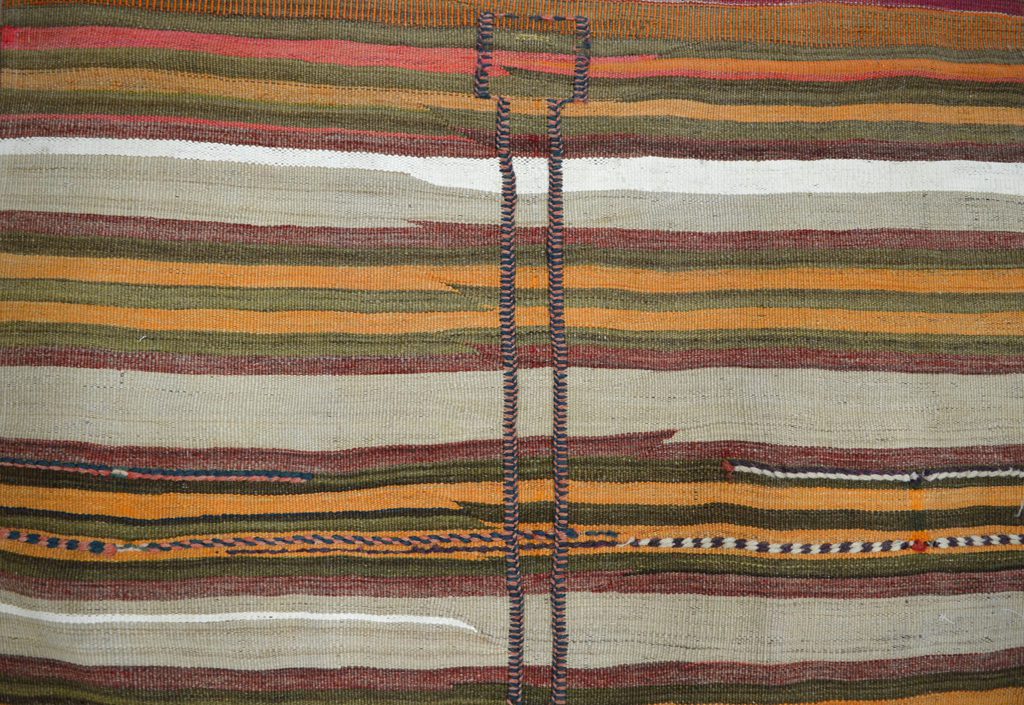Antique Spotlight – Antique Sofreh Flat Weave Kilim Saddle Blanket
One excellent advantage of shopping with Orley Shabahag is having the chance to peruse our immense collection, which includes contemporary, transitional, and antique Persian carpets that are one-of-a-kind. In this week’s Antique Spotlight blog, we will be examining this antique Kilim flatweave, which features a tribal-styled field and unusual central binding. Keep reading to discover the construction of this carpet and the purpose of its unique binding.
Often referred to as flatweave carpets, Kilims feature low pile heights and typically depict minimalist, abstract tribal designs. Like traditional hand-knotted Persian carpets, Kilims require an extraordinary level of craftsmanship to create, and this antique Kilim certainly exemplifies this artistry and skill. Wool shorn from Persian fat-tailed sheep is first hand-spun into yarn. Dye-masters then utilize different dyes and minerals to dye the wool. Weavers prefer these organic dyes for their bright and fade-resistant hues. After the dying process is complete, the yarn must be rinsed in river water and baked under the sun to set the patina. Once dried and set, the wool is ready to be woven into the foundation of this Kilim.
Because the creators of such Kilims are historically nomadic tribes, they create flatweaves in part, reducing the overall weight of their carpets. This, in turn, makes them finer, lighter, and easier to transport. One characteristic that distinguishes flatweave carpets from hand-knotted Persian rugs is the height of the pile. Piled carpets require the weaver to knot each thread onto the foundation. To create Kilim carpets, however, the weaver ties the yarn into the foundation, creating a low pile that is incredibly durable. Many people who prefer flatweaves utilize them in the highest traffic areas of their homes. In addition to their functionality, Kilim carpets also provide aesthetic appeal, with their versatile texture and array of colors and designs. Vintage and antique Kilim designs tend to feature more subdued and simplistic patterns, thereby anchoring a room without drawing all the attention from their surroundings.
Our Sofreh Kilim carpet example has a unique feature that is rather unusual. With this antique carpet measuring 4′ x 5,’ this antique flatweave carpet has gold, red, orange, blue, and brown detailing. The unique rectangular motif, designated by a blue and orange binding, serves a purpose. The binding indicates that the carpet once served as a saddle blanket, placed underneath the seat. The purpose of the blanket is to add a buffer between the saddle and the animal’s hide. Furthermore, the binding would have aligned down the animal’s spine.
Whether you enjoy the simplicity of its design or the texture that a flatweave carpet can provide your space, no matter the application, this Kilim will withstand the test of time. If you like this Kilim carpet and want to see additional options, check out orleyshabahang.com and 1stdibs.com/orleyshabahang to see our extensive inventory of flatweave carpets.




